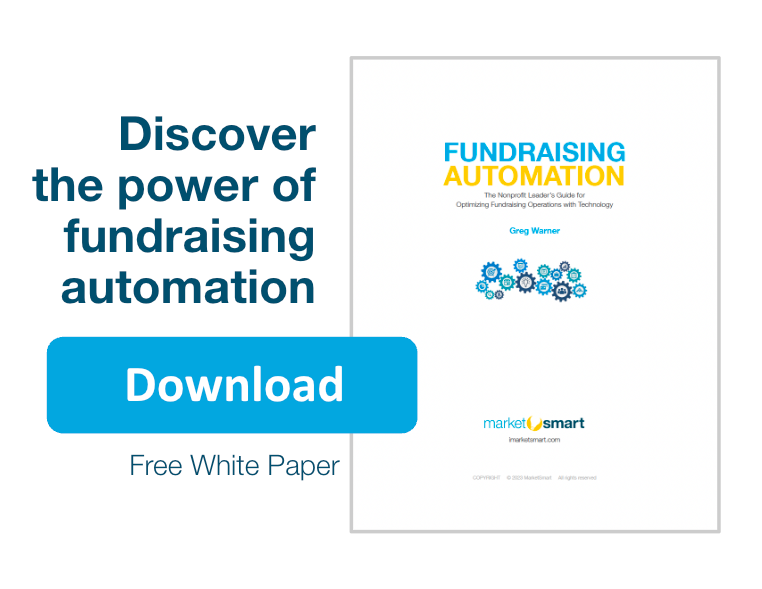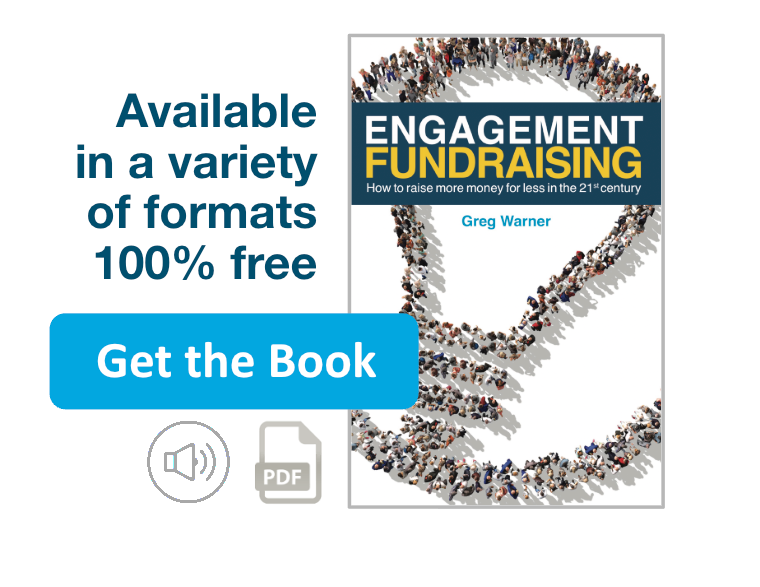Death isn’t a fun topic of conversation.
Asking for a legacy gift can feel like you’re curious about when the donor is going to die, and most people prefer not to go there.
But we have to go there.
Death is the one thing that is inevitable about life. And when a person with even moderate wealth dies, something must happen to their money.
Of course most people do want a say in what happens to it, which is why they write estate plans. Also, most people care about what others will say about them after they’re gone.
They want their story to live on and you can help with that. But only if you ask when the timing is right. However, you’ve got to use the right ask at the right time, based on what you know about each supporter. Here’s some help.
There are four types of legacy gift asks, according to Dr. Russell James.
Which one you use depends on the quality and depth of your relationship with the donor. The more you know them, the more direct you can be in bringing up the idea of leaving a gift to your nonprofit in their will.
1. The Simple Ask – “Will You?”
For well-established donor relationships where the fundraiser and the donor trust each other, know each other, and are more like long time friends than ‘fundraiser and donor,’ the simple ask is the most direct and effective one.
When asking this question, don’t beat around the bush. And don’t worry about bringing it up. You know this person well, and you know they trust you. You also know this person cares deeply about the work your nonprofit is doing.
So, if you’ve done your donor cultivation and qualification process well, you should already know if they’re open to a planned gift. In fact, that’s true no matter which of these four types of legacy gift asks you use.
Here are some examples of a simple ask:
- “Would you be willing to include our organization in your estate plans?”
- “Does your will provide something for our organization?”
- “Would you join me as a member of our Legacy Society by making a planned gift?”
- “Would you join me in making a legacy commitment?”
- “Have you remembered our organization in your will?”
- “Can you tell me if we are included in your will or estate plan?”
Each of these is respectful but direct. You just want to know where this person stands in thinking about making a planned gift. The question shouldn’t surprise them, unless they’re on the younger side and haven’t yet created a will. But that’s something starting this conversation can motivate them to do, and even someone in their 40s or 50s should have a will written up.
For a donor who trusts you, even a younger one, they will appreciate you bringing this up using questions like these.
2. The Soft Ask – “Would You Consider?”
For donors with whom your relationship isn’t quite as strong, where there may still be a feeling of ‘us and them’ in your relationship, simply adding the word ‘consider’ to the above questions softens the blow, so to speak.
With this approach, you’re putting the idea of a legacy gift up for discussion, gently and respectfully.
Here are some ways this might sound. And again, they are pretty similar to the simple ask questions listed above, just a little softer in their approach.
- “Would you be willing to consider including us as one of the nonprofit organizations in your will?”
- “Would you consider including us in your estate plans?”
- “Will you consider putting this organization in your will?”
- “Would you consider leaving $50,000 of your estate to our organization? Maybe by simply adding us as a partial beneficiary of your life insurance?”
- “Would you consider a pledge commitment that isn’t paid until you pass or when you no longer need it?”
- “Of the types of planned gifts we’ve talked about, which one would you consider?”
Each of these has its merits, depending on the situation.
And as you saw earlier, knowing in advance – before you have this conversation – that this donor is already open to the idea of a planned gift makes it a whole lot easier to bring this up.
Of course, with software like MarketSmart’s Engagement Fundraising System that qualifies and cultivates donors automatically before the gift officer has gotten involved with the donor, you can surface this idea in their mind. That way, when you bring it up with the soft ask, not only have they already thought about it, but they have already told you what they think about it (usually in a survey).
With that kind of information (straight from your supporter) you can start the conversation already knowing if they’re open to it, strongly considering it, or are definitely going to leave a legacy gift to a nonprofit.
To see how our software achieves this – at scale – before the gift officer arrives on the scene, request a free demo.
3. The Softer Ask – “Thoughts?”
Here, you’re a little less sure what this person might think of a planned gift, but you believe that now is the right time to bring it up.
This even softer approach uses probing questions that merely suggest the idea of a legacy gift. You are introducing the concept, planting the seed in a very non-threatening manner, and seeing how they respond.
Some examples of this approach to asking for a planned gift include:
- “What are your thoughts about making this kind of gift?”
- “Do you know that we have a legacy society that recognizes our donors who have included our organization in their future plans? … Is that something you and I should be talking about?”
- “What would you say to someone who might be considering including us in their last will & testament?”
Notice how you’re not asking for a planned gift here. You’re just raising the question so you can see how they respond. If you’ve done your homework and already know they have indicated some interest in making a planned gift, but it hasn’t come up in conversation, this is a way to bring it up.
Perhaps when discussing other methods of giving, you can offer legacy giving as another option using questions like these.
4. The Softest Ask – Silence
The last form of asking for a legacy gift is akin to asking someone to dance that you don’t know that well. You bring up the idea, and they will either take you up on it and start moving, or they will go in a different direction. Either way, you let them lead after you mention the idea.
Here’s how this might look. You begin by making this statement:
- “We’ve been getting a lot of notifications from supporters like you that they included our organization in their will.”
- “A lot of supporters have been asking us how they can include our organization in their estate plans.”
Then, you just wait silently and see what they do next.
It’s kind of a passive approach. It’s call and response. You make the call, and then you wait while they respond. If they indicate they want to know more, you take the next step.
The key to this ‘preface approach’ is to make sure your opening statement mentions giving a gift in a will. You could also begin with a written document where planned giving is listed as a giving option, and use that as a springboard for testing the waters in conversation.
The silent approach works well when there is much less history between you and the donor.
In our experience, if you do a good job qualifying and cultivating a donor, you shouldn’t encounter this situation very often because you have already raised the question of legacy giving before the gift officer ever meets them.
But there are situations where it just doesn’t work out that way, and in those moments, this is an effective approach.
And by the way, if you have a Legacy Society at your organization, remember that getting someone to join it doesn’t mean you have won the gift. People change their minds about their estate plans all the time.
See 11 best practices for communicating with Legacy Society members
Related Resources
- The worst way to start a conversation with a donor
- 10 Follow-Up Questions You’ll Need to Deepen Your Conversation with Major Donors (and One to Avoid)
- The Fundraising Myth & Science Series, by Dr. Russell James





